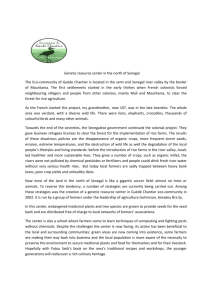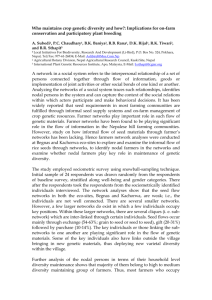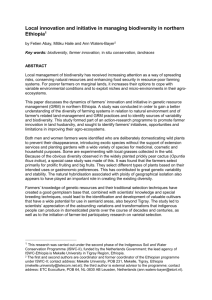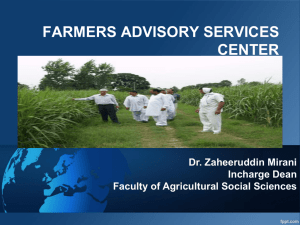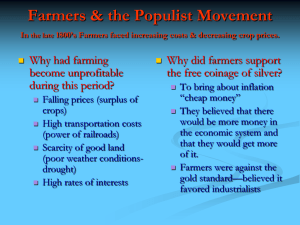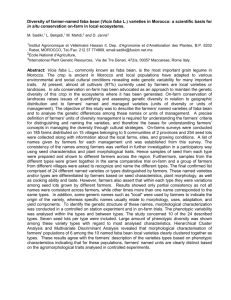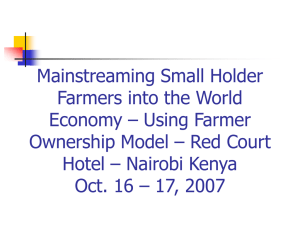Presentation by Wilhelmina Pelegrina
advertisement
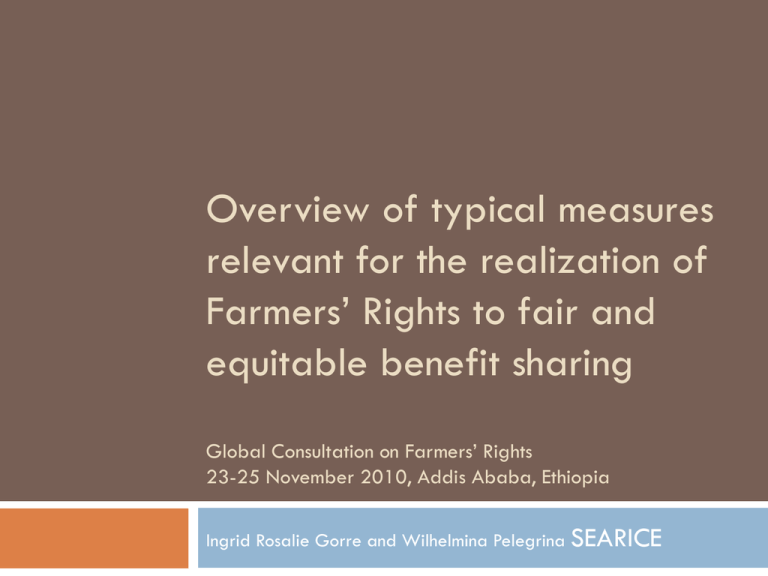
Overview of typical measures relevant for the realization of Farmers’ Rights to fair and equitable benefit sharing Global Consultation on Farmers’ Rights 23-25 November 2010, Addis Ababa, Ethiopia Ingrid Rosalie Gorre and Wilhelmina Pelegrina SEARICE Simplified Value Creation Chain for Genetic Resources Source: Julia Rojahn, 2010, Fair Shares or Biopiracy: Developing Ethical Criteria for Fair and Equitable Sharing of Benefits from Crop Genetic Resources, unpublished dissertation. Eberhard Karls Universität, Tübingen. http://tobias-lib.unituebingen.de/volltexte/2010/4733/pdf/Kompletttext_16_04_10_Veroeffentlichung_interaktiv.pdf Cycle of farmers’ innovation In farmers’ fields: genetic resources are under perpetual state of conservation,use and development. A dynamic system over space and time; the ‘foundation’ of Farmers’ Rights to PGRFA - that these dynamic processes (customary) continues; whether benefit sharing mechanisms support this process. Typologies of benefit sharing legislations Other benefit sharing measures ‘upstream focused benefit sharing’ Democratizing agricultural research and extension by mainstreaming within institutions farmers’ participation - e.g. participatory plant breeding With different typologies, mostly in the global south: Nepal, Bhutan, Lao PDR, Vietnam, Thailand, Philippines, India, China, Indonesia, Cambodia, Iran, Morocco, Syria, Jordan, Nicaragua, Costa Rica, Guatemala, Cuba, Honduras, Mexico, Zimbabwe, Ethiopia, Sierra Leone etc With components of technology/skills transfer, information exchange and capacity building among farmers, plant breeders/researchers Other benefit sharing measures Public support and funding for on-farm conservation and biodiversity management at local/community level Community seed banks and seed saving networks mostly initiated by civil society organizations and farmers themselves but gaining strong goernment support (e.g. Ethiopia, Mali, Zimbabwe, India, Brazil, Colombia, Philippines, Thailand, Canada etc) Community based seed production funding and insitutional support to local seed clubs formed by farmers (e.g Vietnam) Other benefit sharing mechanisms Public support and funding … Community developed seeds for disaster relief response (e.g. Philippines and Thailand) Price incentives for farmer developed seeds (traditional or new varieties by farmers) and grains E.g. Hue, Vietnam Department of Agriculture and Rural Development bought farmer seeds at higher prices which were distributed to other farmers for use Support for farmer capacity building for seed production including on-farm conservation and participatory plant breeding E.g. 1:1:1 program of An Giang DARD with Vietnam Food Company and farmer groups Some examples of possible benefit sharing mechanisms that can support Farmers’ Rights under the Nagoya protocol Access fees/fee per sample collected or otherwise acquired; Special fees to be paid to trust funds supporting conservation and sustainable use of biodiversity; Research funding; Participation in product development; Strengthening capacities for technology transfer; Institutional capacity-building; Contributions to the local economy; Research directed towards priority needs, such as health and food security, taking into account domestic uses of genetic resources in the Party providing genetic resources; Food and livelihood security benefits; Social recognition What is the measure of success? Are farmers better off with the different mechanisms?
